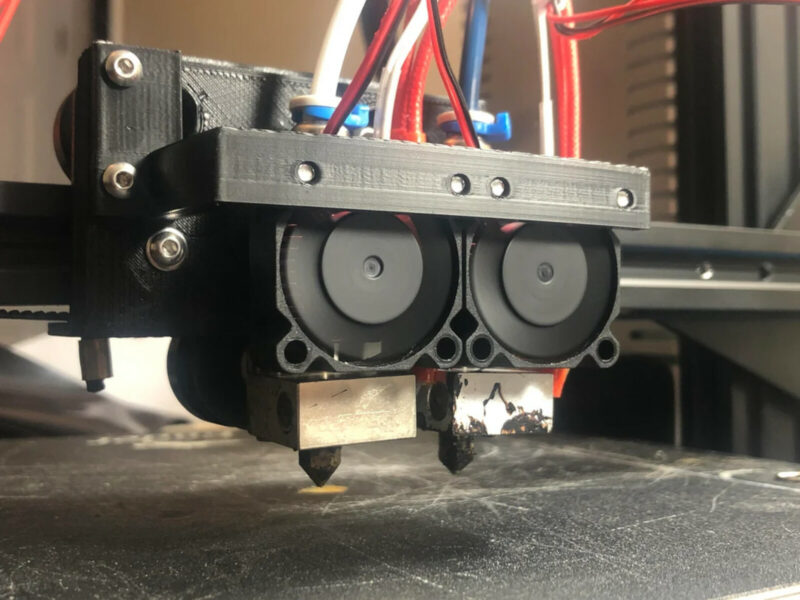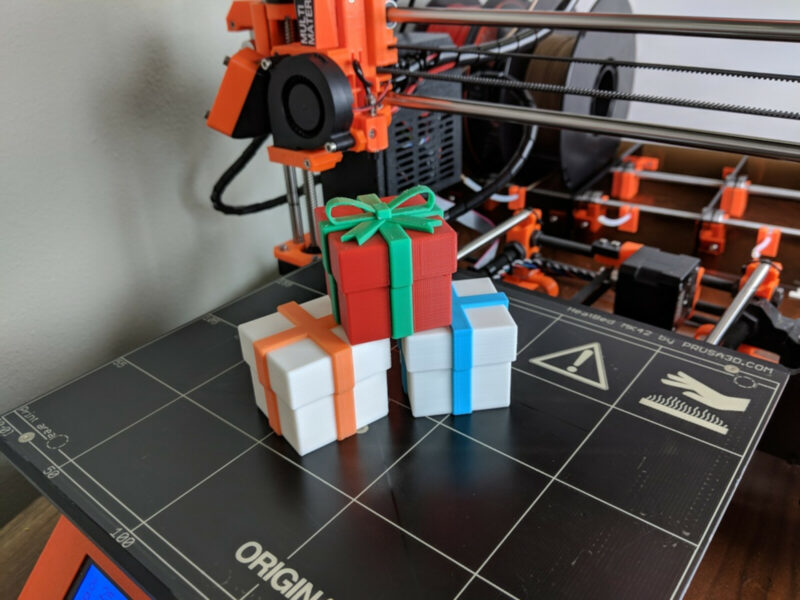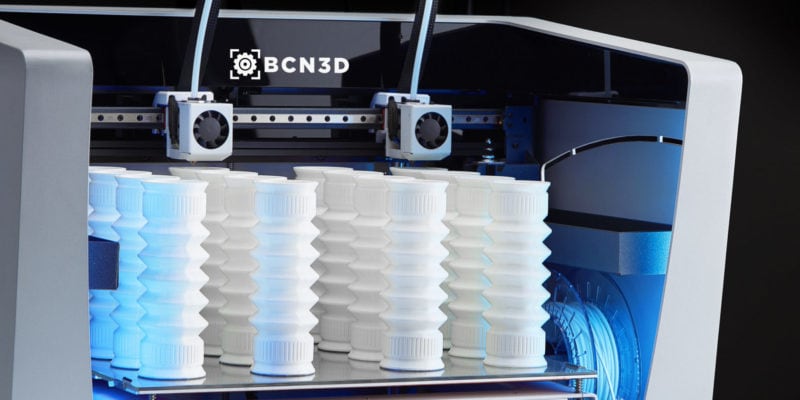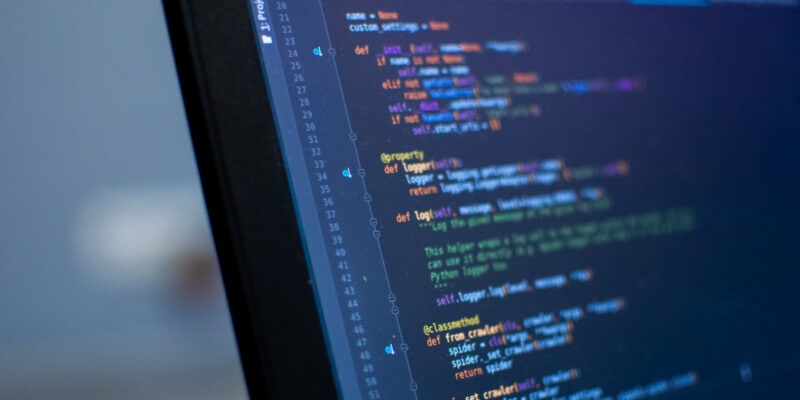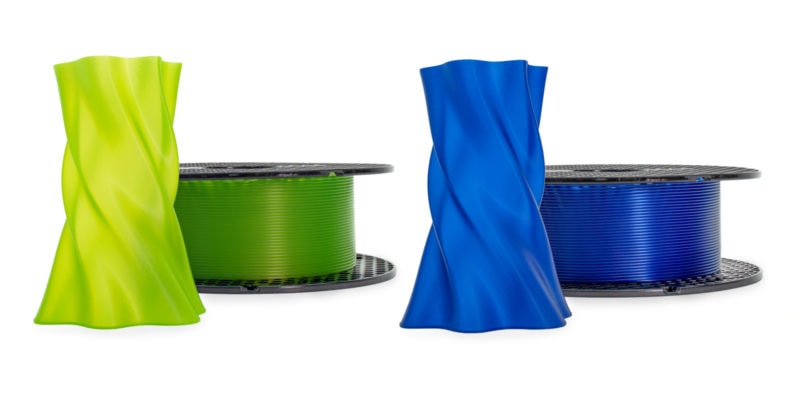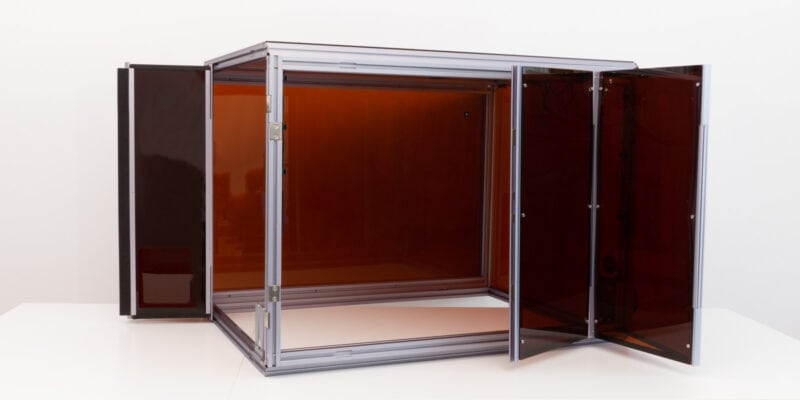Dual extruder 3D printers stand out in the rather single-extruder world of 3D printing. Two extruders printing different materials, multiple models, and colorful prints are a sight to behold. But despite their technological advancement, dual extruders have not yet become the norm, or have they now?
While companies like BCN3D and Raise3D are known for their dual-extruder 3D printers, popular hobbyist 3D printer manufacturers, like Creality and Anycubic, haven’t ventured much into this area. Why is this?
In this article, we’ll help you better understand the world of dual-extruder 3D printers. What are the benefits and challenges of these machines? By the end, you’ll know exactly whether they are worth buying, or if you are better off spending your well-earned money on a single-extruder machine.
Let’s find out if dual extruders are double the trouble or twice the fun!
What is a Dual Extruder Printer?

A dual-extruder 3D printer features two extruders, each capable of extruding a different filament. This configuration allows you to 3D print using multiple materials and colors simultaneously.
In contrast, with a single-extruder 3D printer, you’re limited to printing with a single material at a time. While multicolor printing with a single extruder is possible, it requires a filament change mid-print, which can be time-consuming and potentially lead to print errors.
However, with a dual-extruder printer, you have the flexibility to print two different materials simultaneously. For instance, one extruder prints with ABS, and another with PVA to create soluble support structures. This opens up a world of possibilities for complex and intricate prints that would be challenging, if not impossible, to achieve with a single-extruder printer.
Or imagine being able to print a functional prototype with a rigid outer shell and a flexible, shock-absorbing interior. Or a vibrant sculpture that seamlessly transitions between colors. Dual extruder printers can make it all happen.
Dual-extruder 3D printers come in different configurations. Some feature Independent Extruders (IDEX) with individual print heads, some with side-to-side nozzles, while others feature a dual-extruder, single-nozzle setup. Each setup has its benefits and downsides, which we will discuss in the following sections.
Different Dual Extruder 3D Printer Types to Choose From
While ‘Dual Extruder 3D Printer’ sounds like a single category, there are several types to choose from, each with unique capabilities and advantages. The three main types of dual extruder 3D printers are Independent Dual Extruder (IDEX), Dual Extruder with Side-by-Side Nozzles, and Dual Extruder Single Nozzle.
Let’s delve into their characteristics and benefits, starting with the most simple setup.
Dual Extruder Single Nozzle
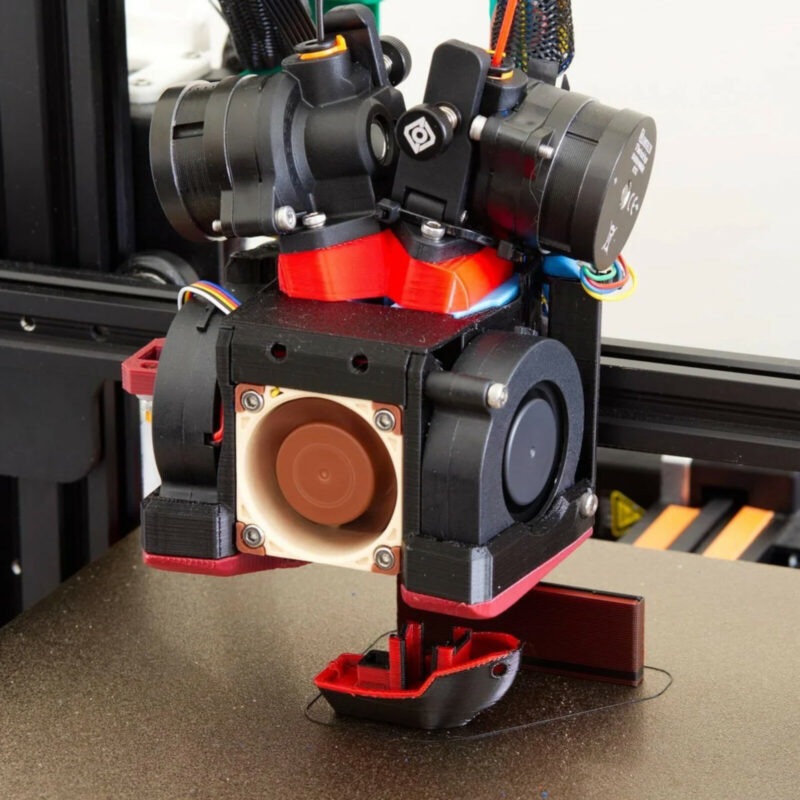
A 3D printer with a Dual Extruder Single Nozzle setup features one nozzle, a Y-shaped hot end, and two extruders feeding filament into it. While switching materials, the primary filament retracts from the hot end, before the secondary material enters.
This setup is compact, doesn’t increase your printer’s footprint, and is relatively affordable. However, material compatibility with this setup is limited and completely depends on the design of the hot end. There’s also potential for filament jams and color mixing due to the constant back-and-forth of the filament into a single hot end.
Dual Extruder With Side-by-Side Nozzles
Dual Extruder with Side-by-Side Nozzle 3D printers are also called dependent dual extruder 3D printers. They have two hotends and extruders, each dedicated to a specific material or filament.
The hotends in these printers are located side-by-side on a single print head. When hot end A moves, hot end B moves to the same location, albeit with an offset.
This configuration allows for more material flexibility and reduces the risk of mixing filaments. It also removes the need for repeated long filament retractions, which can lead to jams in a dual extruder single nozzle setup.
You’ll find, however, that the side-by-side nozzles can lead to issues with oozing and print precision due to the positioning of the inactive nozzle. The complex alignment and calibration process of these printers are also a challenge.
On top of that, the larger size of the print head creates a lot more inertia and impacts the print speed and overall quality. Despite these challenges, with proper setup and maintenance, these printers can produce intricate and high-quality prints. This makes them a popular choice among experienced 3D printing enthusiasts.
Independent Dual Extruder (IDEX)

The Independent Dual Extrusion system features two print heads that move independently on the X-axis. IDEX printers offer unparalleled flexibility with material choices, printing modes, and are excellent for batch 3D printing.
These machines can print multi-material objects with virtually no limitations. Among the three systems, Independent Dual Extruder (IDEX) printers are often considered the best, given their advanced capabilities, versatility, and superior print quality. They offer the most efficient and flexible solution for multi-material 3D printing, making them an ideal choice for professionals and serious hobbyists.
They are typically more expensive, larger, and more complex to operate and maintain. So they are not the best choice for beginners or those on a tight budget.
Because of the vast differences between the systems, we recommend considering your specific needs, skill level, and budget before deciding on the right type of dual extruder 3D printer for you.
What Benefits Do Dual Extruders Have?
The primary advantage of a dual-extruder 3D printer is its ability to produce multi-color, multi-material 3D prints. This capability opens up a whole new world of possibilities as opposed to single extruder 3D printers.
Soluble Supports Printing
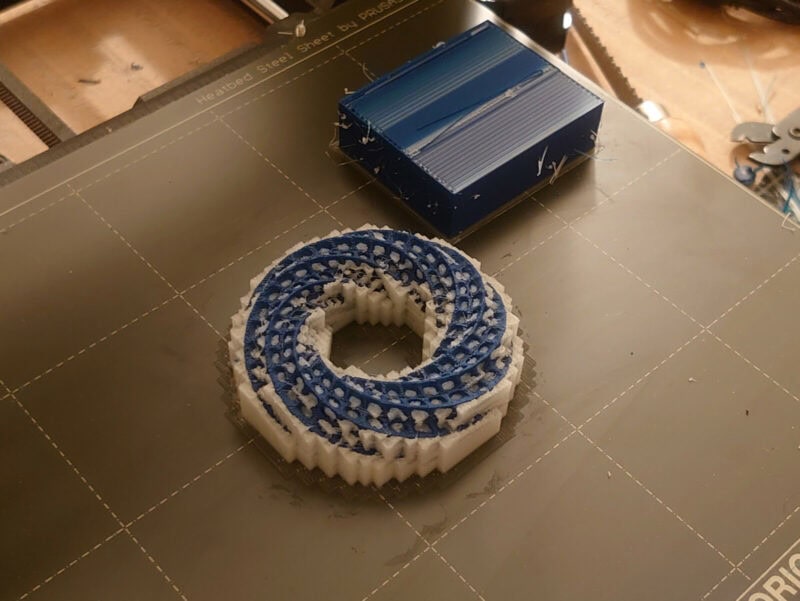
Dual extruders can combine soluble support structures with regular 3D prints. This feature allows you to print complex geometries and intricate designs that would otherwise be impossible or difficult to print with a standard 3D printer.
BVOH (Butanediol vinyl alcohol co-polymer) and PVA (PolyVinyl Alcohol) are well-known materials for soluble printing supports in dual extrusion 3D printing. These materials adhere well to ABS, PLA, and other filaments. If you want to get started with these types of materials, we’ve found Polydissolve S1 to be a great solution (pun intended).
Increased Design Flexibility
With a dual extruder 3D printer, you can experiment with different combinations of materials and colors. This allows you to create unique and visually appealing designs, bypassing some of the limitations of more standard 3D printers.
With these printers, you can print colorful lithophanes, anatomical models with distinctive features, dual-color vases, gift boxes, and more. In our experience, printing with multiple colors is what adds the ‘wow’ factor to your 3D prints.
Enhanced Efficiency
For projects requiring different materials or colors, dual extruders eliminates the need for multiple colored print jobs. This feature reduces the overall printing time, increases the printing speed, and improves the overall efficiency.
In addition, 3D printers with independent extruders (IDEX) can print two identical or mirrored parts simultaneously on a single build plate. The mirror mode and duplication mode increase your printing productivity by 100% and are excellent for batch 3D printing. If you’re looking to make money 3D printing, these machines are worth considering.
Educational and Research Opportunities
In academic research, dual extruder 3D printers benefit hands-on learning and experimentation. Students and researchers can investigate how different materials interact with each other, create more types of compliant mechanisms, print intricate geometries, and push the possibilities of additive manufacturing to the limit.
For instance, in materials science, students can create composite samples with varying ratios of two materials. They can further analyze these materials’ mechanical, chemical, and thermal properties to understand how different material combinations behave. It’s a great method to facilitate research into new composite materials.
Why Doesn’t Every 3D Printer Have a Dual Extruder?
While the advantages of a dual extruder 3D printer are clear, it’s important to consider the challenges that come with it. As you probably expected, these machines are not without their complexities and potential drawbacks. Let’s delve into the reasons why not every 3D printer on the market is equipped with dual extruders.
Increased Complexity and Calibration
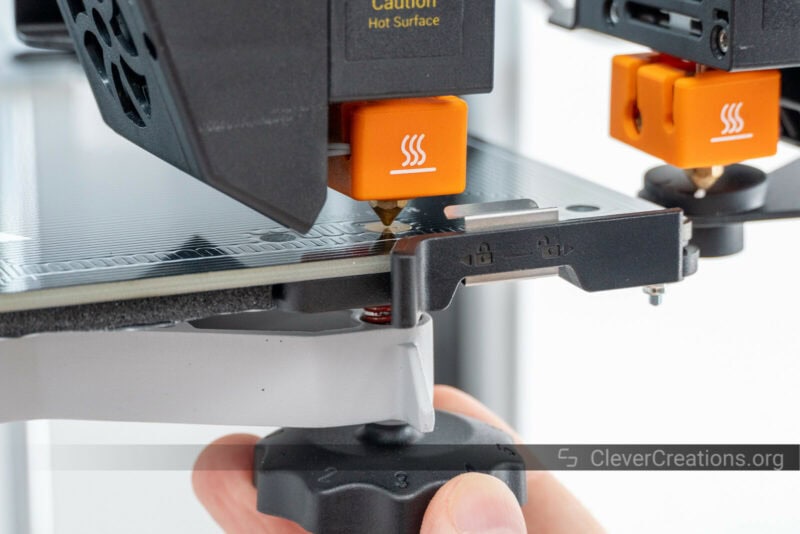
Dual extruder 3D printers are inherently more complex than single extruder setups. The second extruder adds more parts to the printer and increases the complexity of the printing process.
This means you need to do more calibration to ensure both extruders are perfectly aligned and working in harmony. Misalignment can lead to poor print quality, print failure, or in extreme cases, damage to the 3D printer itself.
For example, on dual nozzle setups, if the nozzles are not at the exact same height, there is a risk of the second nozzle hitting the part during the printing process. Similarly, the print bed must be perfectly leveled. A slope in the print bed can lead to one extruder printing in mid-air while the other is dragging on the bed. Needless to say, that’s not what you want.
On the other hand, single-nozzle setups are more likely to encounter problems with filament jams and uneven extrusion. Both filaments share the same hot end and nozzle, so filament A must be properly retracted and purged before filament B is used.
For beginners or those not keen on frequent tinkering, this added layer of complexity can be a deterrent. Especially on budget dual extruder printers, you may find yourself spending more time troubleshooting and calibrating than actually printing.
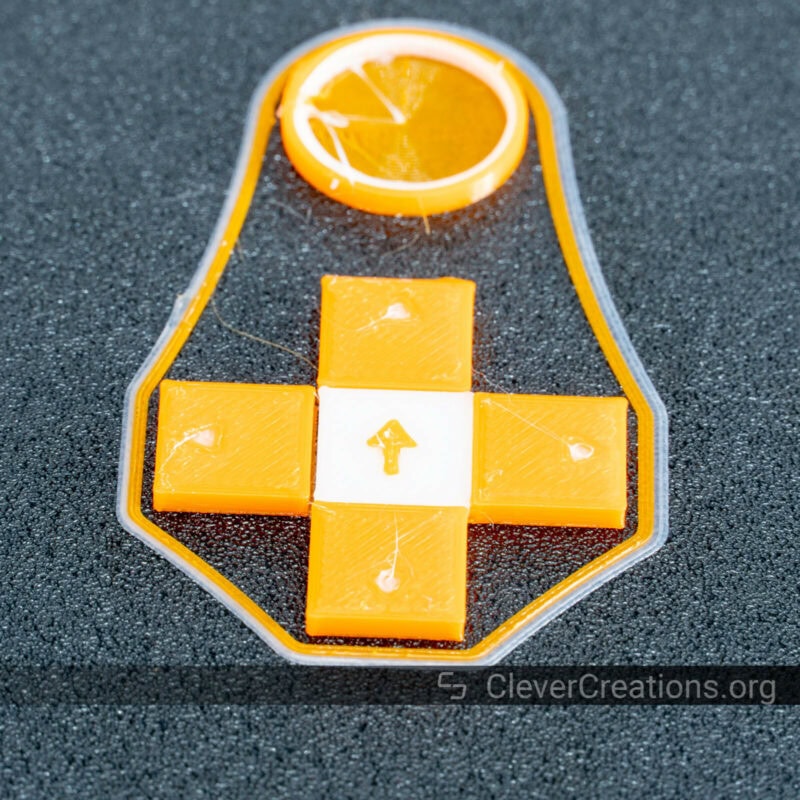
Higher Initial Costs
Dual-extruder 3D printers tend to cost more than their single-extruder counterparts. The additional hardware components and increased complexity of dual-extruder systems are things you end up paying for.
For instance, the aforementioned BCN3D and Raise3D printers cost thousands of dollars and are out of reach for the typical hobbyist.
Hobbyist brands offer much more affordable pricing on dual extruders. But as you can imagine, these printers skip on features, lack precision, and are less user-friendly.
Material Oozing and Wastage
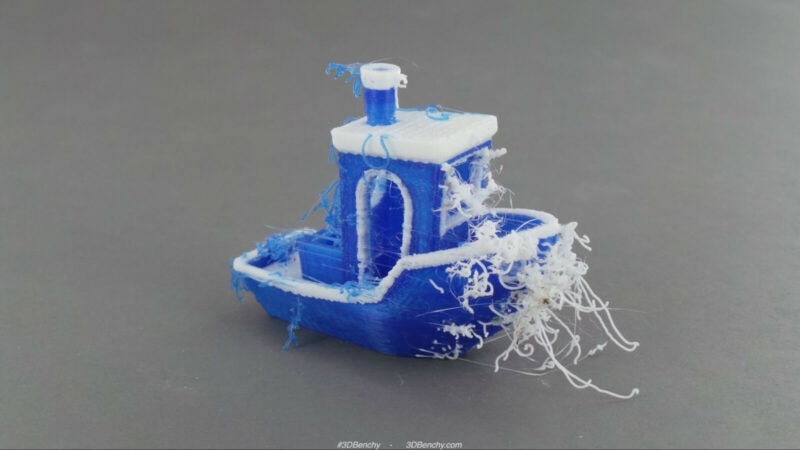
When 3D printing with multiple filaments (whether it is colors or materials), one extruder remains inactive as the other prints. The filament in this inactive extruder remains heated so that it can print quickly whenever the switch happens.
However, because the filament is in a semi-molten state, there is a risk of material oozing or leaking from the nozzle. When the oozing nozzle passes over the printed model, it can leak material onto the part, ruining its print quality.
This is more of an issue with dual extruder printers with a single print head than those with an IDEX setup, so it’s crucial to consider this factor when looking for the best dual extruder 3D printer for you.
Additionally, the constant switching between materials leads to wastage. On dual extruders with a single hot end, the extruder has to purge the hot end to ensure the previous filament is completely removed before starting with the new filament.
This purging process results in wasted filament, which can add up over time, especially if you’re frequently switching between materials. We’ve found that on smaller 3D prints, the wasted material can weigh more than the actual printed part itself!
Larger Footprint
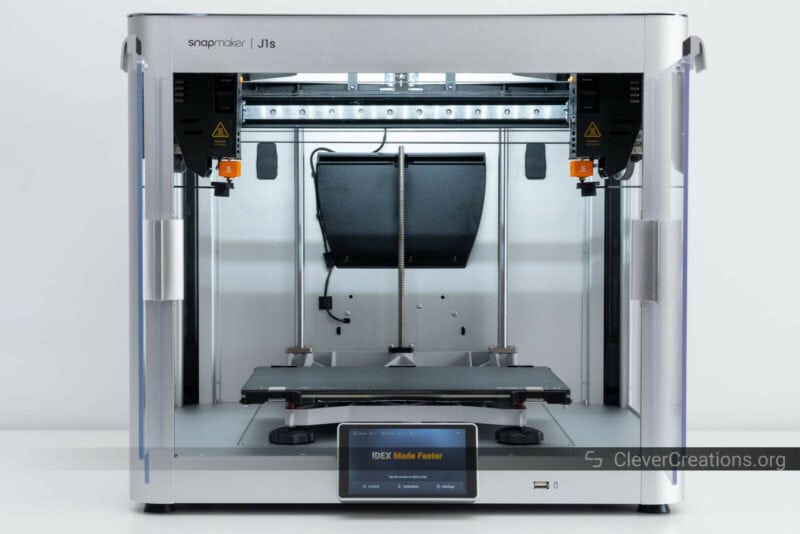
Dual extruder 3D printers have a larger footprint than single extruder printers. The extra print head requires more space, and the overall build volume may be reduced due to the space taken up by the additional extruder. This could be a disadvantage if you have limited workspace or need to print larger objects.
While you can opt for a larger 3D printer to compensate for this, keep in mind that larger 3D printers also come with a higher price tag. This added cost, combined with the already increased cost of dual extruder printers, can make these machines a significant investment.
Conclusion: Who Benefits From Dual Extruder Printers?
A dual extruder 3D printer is a valuable investment for certain users and applications. It is not necessarily for everyone, however, and unless you know for sure that you’ll benefit from it, you’re better off saving the money.
Product development, prototyping, or manufacturing professionals are users who most benefit from dual extruders. Hobbyists who want the creative freedom to print with multiple colors or create intricate designs. Educators and students can use these printers as well, for example, to experiment with different materials.
Ultimately, the decision to invest in a dual extruder 3D printer should be based on your needs, budget, and the level of complexity you’re willing to handle. The key is ensuring this investment aligns with your goals and needs.
Whether you’re a hobbyist looking to explore multi-material printing, or a professional seeking to enhance your prototyping capabilities, a dual extruder 3D printer can unlock a whole new world of possibilities in your 3D printing journey.
If you end up buying such a machine, we wish you happy multi-material printing!



